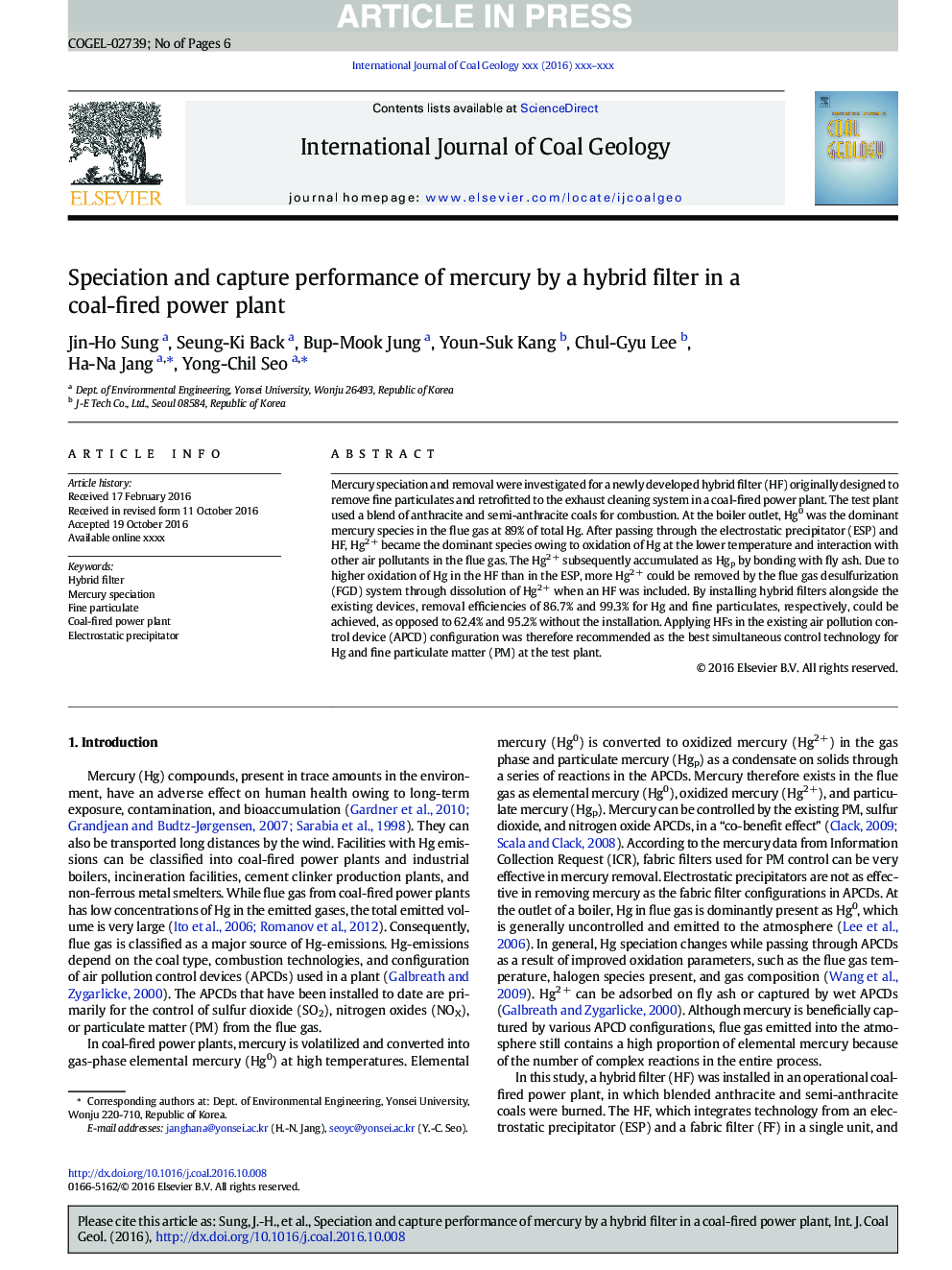| Article ID | Journal | Published Year | Pages | File Type |
|---|---|---|---|---|
| 5483768 | International Journal of Coal Geology | 2017 | 6 Pages |
Abstract
Mercury speciation and removal were investigated for a newly developed hybrid filter (HF) originally designed to remove fine particulates and retrofitted to the exhaust cleaning system in a coal-fired power plant. The test plant used a blend of anthracite and semi-anthracite coals for combustion. At the boiler outlet, Hg0 was the dominant mercury species in the flue gas at 89% of total Hg. After passing through the electrostatic precipitator (ESP) and HF, Hg2Â + became the dominant species owing to oxidation of Hg at the lower temperature and interaction with other air pollutants in the flue gas. The Hg2Â + subsequently accumulated as Hgp by bonding with fly ash. Due to higher oxidation of Hg in the HF than in the ESP, more Hg2Â + could be removed by the flue gas desulfurization (FGD) system through dissolution of Hg2Â + when an HF was included. By installing hybrid filters alongside the existing devices, removal efficiencies of 86.7% and 99.3% for Hg and fine particulates, respectively, could be achieved, as opposed to 62.4% and 95.2% without the installation. Applying HFs in the existing air pollution control device (APCD) configuration was therefore recommended as the best simultaneous control technology for Hg and fine particulate matter (PM) at the test plant.
Keywords
Related Topics
Physical Sciences and Engineering
Earth and Planetary Sciences
Economic Geology
Authors
Jin-Ho Sung, Seung-Ki Back, Bup-Mook Jung, Youn-Suk Kang, Chul-Gyu Lee, Ha-Na Jang, Yong-Chil Seo,
